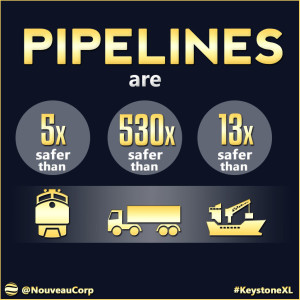There is – very simply and very clearly – no substitute for this system.
The facts are clear: pipeline infrastructure is the safest, most affordable, most efficient, and the most environmentally friendly means of transporting the resources we need.
At no point in our nation’s history has the role and future of our national pipeline infrastructure been subject to more careful review and scrutiny.
Our 2.6 million miles of pipeline (enough to wrap around the earth 1oo times) have – for decades – transported the lion’s share of our nation’s needed energy, chemical, and water resources. For most of that time, this infrastructure has remained “out of sight and out of mind.” That of course is no longer the case given the scrutiny levied on new pipeline project.
Scrutiny is, of course, a welcome and warranted thing. But, in the face of this analysis, it is of the utmost importance that we, as a nation, recognize the indispensable role that pipelines have played and will by necessity continue to be utilized in our economy.
Pipelines transport is far, far safer than any other form of transportation. In the last 10 years, there were 6,566 pipeline incidents. In the same time period, there were 61,426 railroad accidents. When compared to trucking, pipeline transportation is a staggering 16 times safer than rail, and 189 times safer than trucks when comparing freight tons shipped. To take it a step further, according to USDOT statistics, pipelines are 451 times safer than rail on a per-mile basis. The disparity between pipeline and highways becomes even more stark, with pipelines a full 29,280 times safer on a per-mile basis.
In fact, thanks to strong government oversight by the Pipeline and Hazardous Materials Safety Administration (“PHMSA”), new technologies, and a shared safety responsibility by all stakeholders, pipeline incidents continue to decline. Over the past 10 years, the frequency of pipeline spills has decreased by 59%, and the volume of pipeline spills has decreased by 43%, even as overall production has increased both the mileage of active pipelines and the freight tons shipped by them.
There is – very simply and very clearly – no substitute for this system.
The facts are clear: pipeline infrastructure is the safest, most affordable, most efficient, and the most environmentally friendly means of transporting the resources we need.